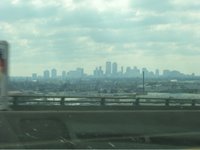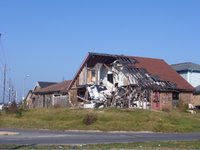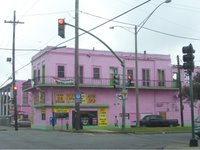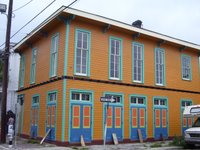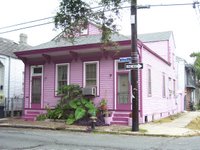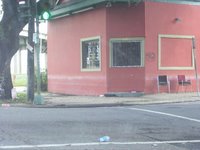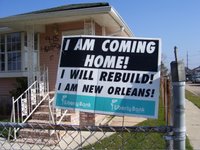Residents of New Orleans
 New Orleans is a one of the oldest cities in America and has seen numerous flags occupy its territory. It is a city steeped in mystery and a place that has been unknown to me until recently. The New Orleans that I was familiar with was one that embodied phrases like “The Big Easy” and “Laissez les bons temp rouler (let the good time roll).” For me, it was a place where anything goes and the party never stops. Now after living here, those preconceptions have changed. Those phrases still exist and are apart of the city, but now after Hurricane Katrina I’ve found that community and the preservation of cultural heritage are new phrases I associate with New Orleans. After the storm, the importance of communication and the intensity at which they exhibit it is something that is at the heart of every New Orleanian.
New Orleans is a one of the oldest cities in America and has seen numerous flags occupy its territory. It is a city steeped in mystery and a place that has been unknown to me until recently. The New Orleans that I was familiar with was one that embodied phrases like “The Big Easy” and “Laissez les bons temp rouler (let the good time roll).” For me, it was a place where anything goes and the party never stops. Now after living here, those preconceptions have changed. Those phrases still exist and are apart of the city, but now after Hurricane Katrina I’ve found that community and the preservation of cultural heritage are new phrases I associate with New Orleans. After the storm, the importance of communication and the intensity at which they exhibit it is something that is at the heart of every New Orleanian.My first experience with the residents of New Orleans was when I was invited to the first meeting of the UNOP. The UNOP is the Unified New Orleans Plan that is being organized and hosted by Concordia, which is a community based planning and design office that my friend Tony was working for over the summer. He called me on July 30th, the day of the meeting, and asked if I wanted to come by and witness “the first planning meeting of New Orleans.” I had just moved down here with three other students two weeks prior and was eager to see how the planning and rebuilding process was turning out.
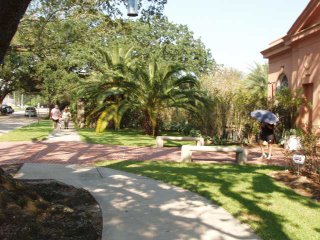
My roommates and I headed to City Park where the meeting was taking place. It was clear and sunny Sunday afternoon and people were lining up outside the Botanical Garden entrance to register with the Concordia representatives. Since we were now official residents of New Orleans we decided to participate in what could soon be an historical afternoon. We waited in line and came to find our friend Tony working the registration table.
He commented on the unexpected large turnout and we each registered our address and marked our place on the district map, which was in district 3. When we entered into the Botanical Garden, we walked through a covered arch and then through a set of double doors into the main meeting hall where there were two rows of district booths flanking a central walkway where food was setup. The space was nice but extremely small for the amount of people that showed up to the meeting and since the planning was already such a sensitive topic the cramped room added to growing tensions.

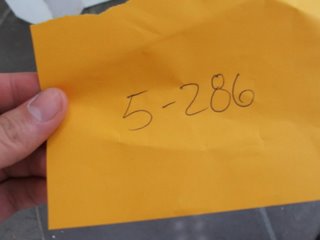
When we waked into the main room, the meeting was just starting and people were told to report to their respective districts. The goal of the first meeting was to talk with district representatives and generate a series of questions that residents wanted the planning teams to consider on August 1st, which was the scheduled second meeting. We all felt a little out of place and thought our participation in the discussions should be kept to a minimum because we had only been residents of New Orleans for two weeks. 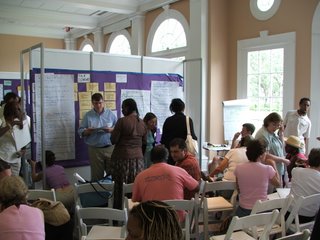
The meeting was very intense with confusion and frustration being felt by all the participants. I walked around and listened to the different groups discuss what they felt was important for the planning teams to know about their communities. Numerous topics were discussed ranging from social equity to cultural and architectural preservation. The theme I felt every group had in common was the idea of maintaining their neighborhood uniqueness and individuality.
The intensity in which the people fought was to preserve their unique neighborhood individuality. Every neighborhood seems to have a cultural identity unique to that particular area. All of them have their similarities, yet they have their differences too. It was interesting to experience first hand what residents at the UNOP meeting were so adamantly trying to defend and preserve.

